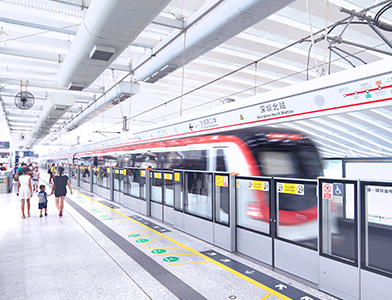Achievements and innovations in 2013

A world first in low voltage
Low-voltage circuit breakers are ubiquitous, but the new Emax 2 is the only device that can both protect electrical circuits and adapt energy consumption within user specified limits on peak power use. Replacing existing traditional breakers with the Emax 2 breaker has the potential to achieve annual savings of 5.8 million MWh, energy savings that would reduce CO2 emissions by 4 million tons. Breakers like Emax 2 are deployed where protection and control of large amounts of energy are used in a low-voltage environment such as industrial and commercial buildings, data centers or ships.
Irish and Welsh grids connected
ABB has connected the power grids of Ireland and Wales with an undersea HVDC transmission link. Currently the highest-rated HVDC Light® connection at 500 MW, the link enables cross-border power flow, enhancing grid reliability and facilitating power trading between the two countries. The link also facilitates the integration of renewable energy; as Ireland expands its wind power capacity, it can export surplus electricity to the United Kingdom and can import power when required. Additionally, HVDC Light’s “black start” capability can help restore power quickly in the event of an outage, without the aid of external energy sources.

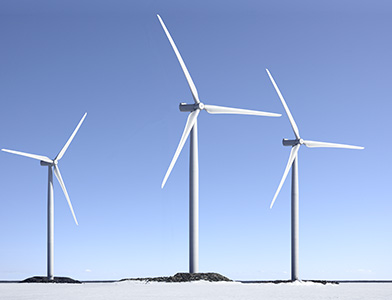
Wind of change
ABB has designed and tested a new approach to selecting the electrical drivetrains for wind turbines, providing a solution that is compact, lightweight and of the highest efficiency, compared to all other concepts. The drivetrain is the main electrical production system of the turbine and influences the weight, size and maintenance needs of the turbine. Selection of the appropriate drivetrain requires care and must take into account all of the requirements and lifetime costs, including turbine power, grid requirements, availability, material and maintenance costs.
Switchgear for smarter grids
A new disconnecting circuit breaker with a fiber-optic current sensor (FOCS) simplifies substation design while adding to the intelligence of the device. For many decades, current measurement in high-voltage equipment has relied on often bulky transformers that could weigh up to several tons. These measurement transformers can now be replaced by ABB’s FOCS, whose small size allows it to be integrated into primary equipment such as circuit breakers, saving on space and installation costs. The FOCS also saves on material – e.g. aluminum, copper, insulation materials and transformer oil – that are contained in a functionally-equivalent conventional current transformer.
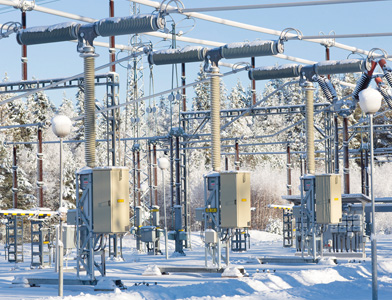

New electric bus tested in Geneva
With no overhead lines and ultrafast charging times, the bus enables new opportunities for silent, flexible, zero-emission urban mass transportation. The system delivers a 15-second charge at bus stops, providing enough power for the bus to reach the next charging stop, allowing for traffic and detours. The fast-charging technology and the onboard traction equipment used in this project were developed by ABB and optimized for high-frequency bus routes in key urban areas. Thanks to an innovative electrical drive system, energy from the roof-mounted charging equipment can be stored in compact batteries, along with recuperated energy due to vehicle braking, powering both the bus and its auxiliary services, such as interior lighting.
Greening the microgrid
Faial, one of the Azores islands in the mid-Atlantic ocean, has deployed ABB software that will allow it to meet its goal of generating 75 percent of its electricity from renewable sources by 2018 without destabilizing the network. The microgrid control solution – based on ABB’s Microgrid Plus – controls and monitors all the wind turbines and oil-fired generators on the island, calculates the most economical configuration, ensures balance between supply and demand, maximizes the system’s use of wind power and, crucially, optimizes the generators so that the entire system performs at the peak of its potential.
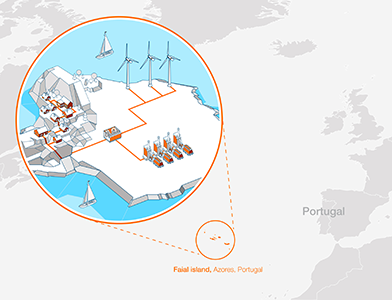
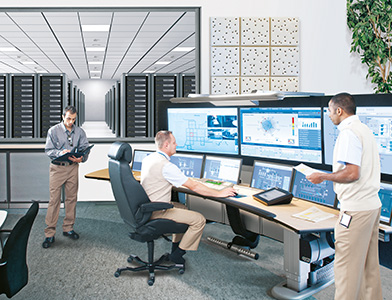
An intelligent solution for universities and colleges
ABB has launched a data center infrastructure management (DCIM) solution specifically for academic institutions, to help them reduce data center energy costs while increasing reliability of online services. With the proliferation of online courses and services in higher education, institutions depend increasingly on reliable and affordable management systems for energy-hungry data centers. The DCIM “Education Edition” provides special pricing on deployment for accredited academic institutions, real-time power monitoring for both power and cooling systems and specific reporting to increase visibility of energy savings and forecasting.
Meeting demand for energy efficiency
New technology for the capture and reuse of regenerative braking energy in trains boosts the energy efficiency of traction systems. Rail vehicles regenerate braking energy through their traction motors. Most of the time, a small portion of this kinetic energy powers onboard loads, while the remaining energy is sent back to the network and reused if a nearby vehicle is accelerating. If this is not possible, the surplus is usually dissipated. With ABB’s EnvilineTM Energy Recovery System, this waste can now be minimized and overall energy consumption reduced by 10 to 30 percent – without the need to invest in new rolling stock or network control systems.
